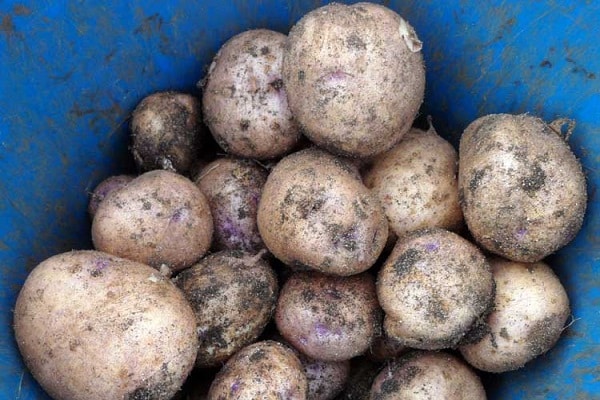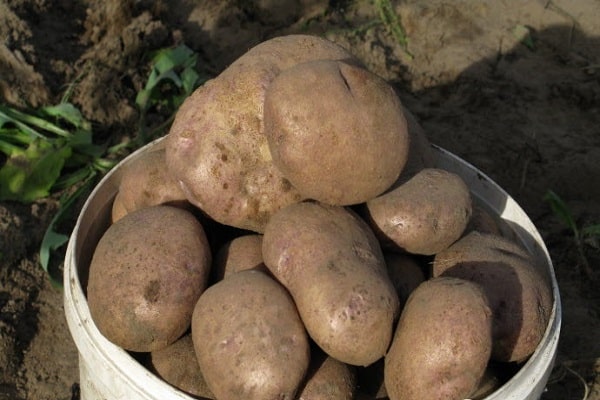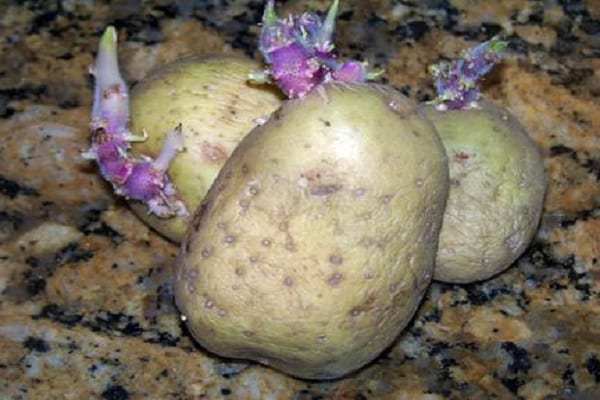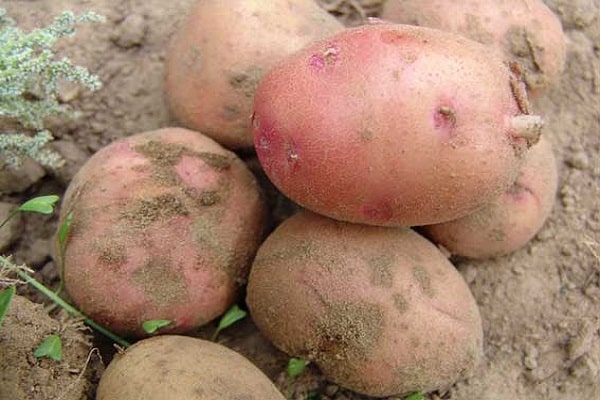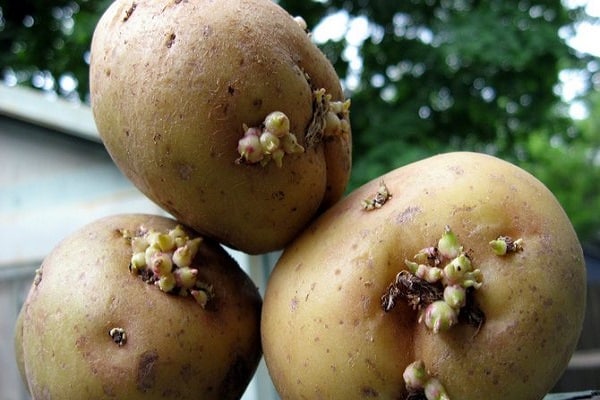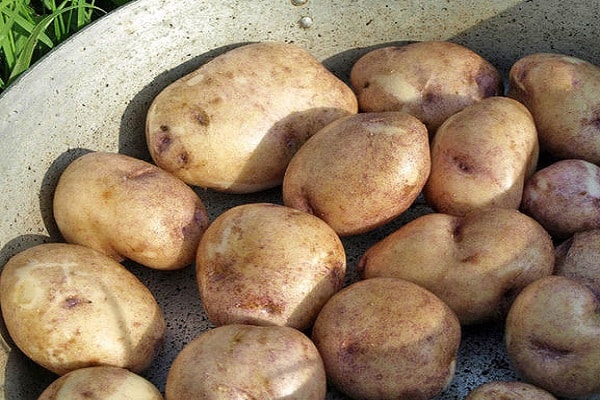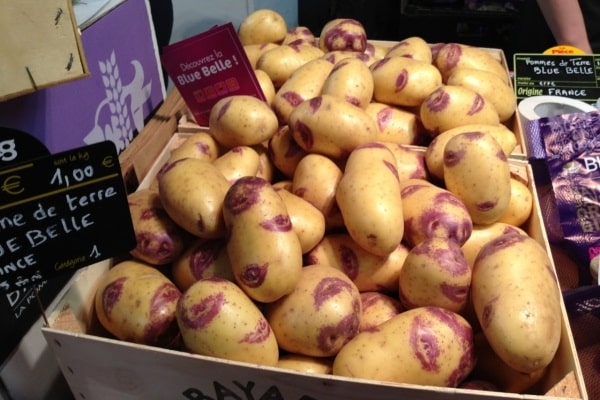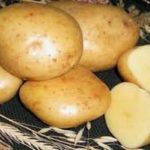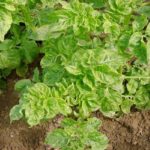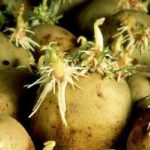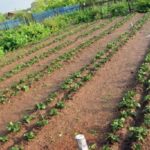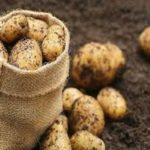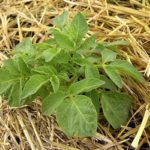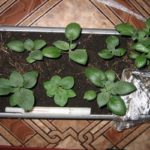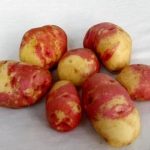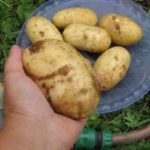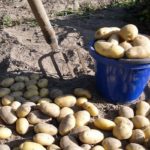Traditionally, the Republic of Belarus is called the “potato power,” but even in Russia this crop occupies a lot of cultivated areas at the level of private farms. Sineglazka potatoes have been loved and revered by our compatriots for decades. In a warm, non-rainy summer, the harvest can be high, and the tubers come out large and even. If the temperature in the summer months is below normal and it rains, this negatively affects the yield, the tubers become smaller, and the taste of the potatoes noticeably deteriorates.
Despite all the nuances, Sineglazka’s characterization is positive. In particular, it adequately resists diseases such as:
- potato cancer;
- scab;
- golden nematode.
To avoid troubles, experts advise purchasing high-quality seed potatoes from a trusted seller. It is not recommended to plant tubers from your own reserve, and after a few seasons the variety must be completely renewed.
"Talking" name
It’s easy to recognize the root crops of the described variety among others – by their oval-oblong shape, blue shoots and pale purple peel. Blue eyes gave this culture its name.
For reference: the Sineglazka variety was bred in the USSR by specialist Demin in the late 40s. The scientist achieved success by crossing several types of cultivated potatoes with wild ones.
The hybrid was tested at several experimental stations and initially received high praise from experts. However, industrial cultivation has shown that potatoes cannot withstand long-term storage.
Let's begin the description of the variety with the fact that Sineglazka belongs to the category of medium-ripe potato varieties. This is a potato with amazing taste and high starch content.
Sineglazka perfectly resists late blight. However, such potatoes do not remain in normal condition until spring, so the owners try to consume the tubers of this variety first. And the blue-eyed potato puree is simply amazing!
Planting, weeding and other activities
Blue-eye is usually planted in early May when the weather is favorable and taking into account regional cultivation characteristics. Early potatoes initially placed under film. Pre-treatment of seeds from pests and diseases, germination in the sun can be the key to a rich harvest.
The Sineglazka potato variety is best suited for planting on sandy and loamy soils.It needs organic matter in the fall and good compost in the spring. Manure deficiency is corrected with potassium and phosphorus sulfate - half a large spoon per square of soil. Until spring, fertilizers are transformed into a digestible form suitable for plants.
The beds for Sineglazka are prepared in the following sizes:
- from 60 to 70 centimeters in width;
- the holes are made at a distance of 35–40 centimeters from each other;
- the depth of the holes is 10–12 centimeters.
The space formed according to such dimensions contributes to the systematic development of tubers. Private owners, as a rule, add a handful of ash and humus to each hole before planting seeds.
With the appearance of sprouts and before hilling, the soil should be loosened and nitrogen compounds, urea or mullein should be added. After each application of fertilizers, the beds must be irrigated. As for hilling, it must be done several times a season for better tuber growth.
Potatoes should be watered based on the amount of precipitation over the summer. If the season is rainy, then additional watering of the beds is not required. In a drought, the crop, like all other plants, will die without irrigation. On average, these events are planned at the time of potato sprouting, during the flowering period and after it. Excessive or deficient watering will directly affect potato yields.
When potatoes of the Sineglazka variety go into the tops, it means that there is an excess of nutrients and moisture in the soil. In the first case, the application of fertilizers is limited or completely abandoned until the end of the season, and in the second, the tops are trampled down a couple of weeks after flowering.
Work with potatoes such as weeding and destruction of the Colorado potato beetle and other potato pests must be carried out constantly, otherwise in the fall you may be left without potatoes. Diseases must be detected at an early stage and prevented from spreading. Well, if it is not possible to recognize the problem in time, then you have to move on to decisive action in the fight against plant ailments:
- spray with chemicals;
- remove diseased bushes along with tubers;
- burn infected plants.
Harvesting and storage
Potatoes ripen at the end of July, and they can be harvested until the end of September. The highest yield is observed in the final stage of the growing season. Citizens begin partial collection of Sineglazka in the second half of July. It is recommended to start digging up potatoes for storage in the twenties of August.
A sunny day is chosen for harvesting. In the rain dig potatoes both unpleasant and unreasonable - after all, it needs to be dried, otherwise it will quickly begin to rot.
When digging, the tubers are left on the ground and not placed in buckets or bags - let them dry thoroughly. To prevent the collected potatoes from getting wet by rain when airing, it is better to lay them out under a canopy.
After drying, the potatoes are sorted and divided into large, medium, and small. Rotten tubers are discarded, bruised or spoiled ones are cut and immediately used for cooking. Good specimens are put away for storage. It is best to store potatoes in the basement, on the balcony or loggia at a temperature of + 3–5 degrees.
People's reviews of Sineglazka are positive. This is one of the most favorite varieties. And, despite various problems with its preservation, it is still in demand.

